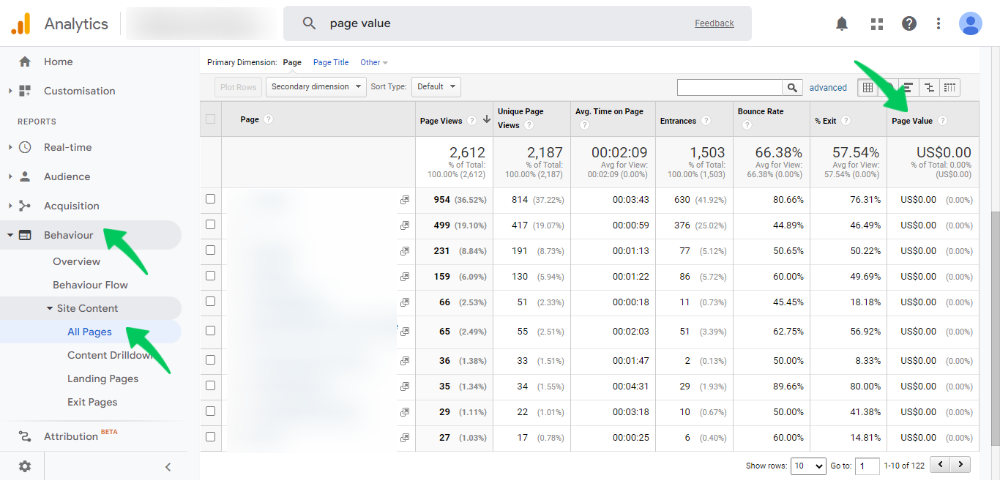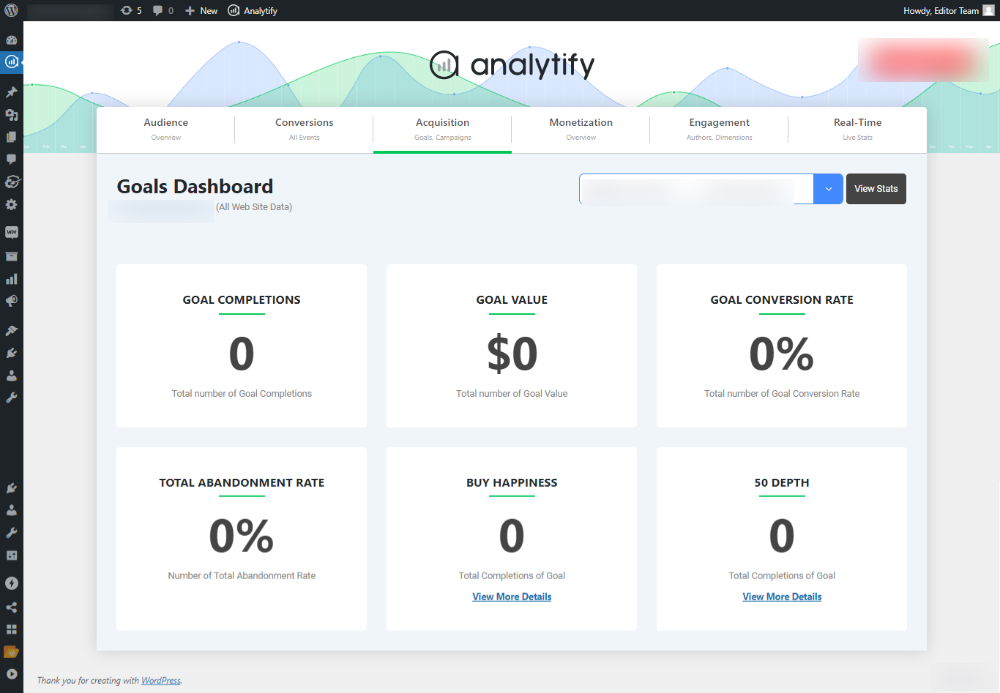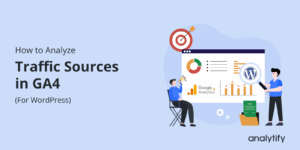
What is Page Value in Google Analytics (Exclusive Guide)
Do you want to know what Page Value is in Google Analytics?
As the website owner, you might want to understand each page’s contribution to revenue and goal accomplishment.
In this article, we’ll take a look at what is page value in Google Analytics, and how you can use it to better understand the performance of your website pages.
Table of Content
- Defining Page Value in Google Analytics
- Why is Page Value Important in Website Performance Analysis?
- How is Page Value Calculated in Google Analytics?
- Page Value in Google Analytics: Important Things To Remember
- Use Analytify For Tracking Goal Conversion
- Conclusion
- Frequently Asked Questions
Defining Page Value in Google Analytics
Google Analytics defines Page Value as the average value of the page a user visited before they completed a goal or purchase transaction on your website.
Note that Page Value is calculated for a page only if that page was included in the session where the goal completion or eCommerce transaction occurred. Otherwise, Google Analytics would show $0 as the Page Value of the page.
To view the Page Value report, click the Behavior tab to expand it. Next, expand the Site Content, and click All Pages to see the report.

Why is Page Value Important in Website Performance Analysis?
Many people simply check the number of visitors, sessions, and pageviews to evaluate the performance of website pages.
The conventional wisdom is this: The more views a page gets, the more valuable it must be for goal completion.
Page Value provides a simple metric for understanding the actual value of a page. The pages with higher Page Value are more valuable for your website because they contribute toward a sale or goal completion.
Once you evaluate pages on Page Value, you can focus on improving the pages with a higher conversion share.
To get the most benefit, you should also include pageviews and users in the analysis. This allows you to see which pages receive more traffic but contribute little to the actual goal conversion.
Combining Page Value And Conversion Rate
For many website owners, the Conversion Rate of the landing pages is the only metric that matters in revenue analysis. After all, this is what shows the increase in the dollar revenue.
However, you should realize that the Conversion Rate of the landing pages ignores the contribution of other website pages. These pages help customers make up their buying decision.
When discussing what is Page Value in Google Analytics, you should combine both metrics to get a more holistic view of the website’s performance. The Conversion Rate shows the final conversions (including the dollar amount), while the Page Value shows the contribution of all other pages that persuaded the visitors into becoming customers.
How is Page Value Calculated in Google Analytics?
Google Analytics uses the following formula for calculating Page Value.
Page Value = (Page value of all the pages before transaction + Transaction value)/ Total unique pageviews
In order to accurately track Page Value, you first need to ensure that every conversion has a dollar value assigned to it.
Important: When assigning a goal value, consider assigning higher values to goals crucial to landing a sale. For instance, signing up to receive the offer could be $10, while signing up for a trial account could be $40.
At this point, you’re ready to calculate Page Value on your website. Google has a great article that explains the calculation part with several examples.
Page Value in Google Analytics: Important Things To Remember
Now that you know the definition and calculations behind the Page Value statistics, it is time to check out several important ideas you should keep in mind.
1. Page Value is Higher for Cart Pages
For eCommerce stores, the cart pages should have higher Page Value than other pages.
Cart pages lead to the actual transaction and, therefore, should have a higher share in goal completion. If you don’t see more cart pages in your Page Value analysis, you need to work on optimizing these pages.
2. If Page Value is $0, You Need to Set the Goals
When you first start, you might see $0 in the Page Value column of the All Pages report. This happens for one of two reasons:
1)The page(s) aren’t contributing toward goal completion.
2) You haven’t set goal tracking that assigns a monetary value to certain goals.
3. Too High Page Value Can be a False Positive
Each page has a “natural” Page Rate that reflects its role in the conversion process.
For instance, product and cart pages have a higher Page Value than a blog or the home page.
If you see a usually high Page Value for a page that isn’t a part of the conversion chain, you should investigate the issue.
Use Analytify For Tracking Goal Conversion
The idea of Page Value is closely tied to the rate of goal completion. While you can use Google Analytics to keep an eye on goal completion, leaving your website every time and switching over to Google Analytics can add minutes and hours to your monthly workload.
We recommend you install Analytify, which connects to your Google Analytics account and brings essential traffic information to your WordPress dashboard.
The plugin also offers a dedicated goal tracking report where you can see the progress of goals you set up in Google Analytics.

Conclusion: Page Value in Google Analytics
We hope you now have a good idea about Page Value and how you can see it in Google Analytics. It is an interesting metric that helps you understand the performance of your pages and the content on these pages.
Let us know how you use Page Value to assess your page performance.
Frequently Asked Questions
How can I use Page Value for analyzing content performance?
You can use Page Value to evaluate how well the content, particularly CTA and ads, on a page is performing. Usually, better content results in a higher Page Value, and vice versa.
Is Page Value an essential metric in eCommerce store performance analysis?
You should use Page Value to discover the pages that send more visitors to the pages where they buy products. You can then focus on optimizing or duplicating these pages to increase revenue.
Are Page Value and Conversion rate connected?
Page Value and Conclusion Rate often go hand-in-hand. For example, a high conversion rate often means your pages are contributing to goal completion (this is indicated by an increased Page Value for popular pages).
That’s all! You can also check out all About Google Analytics Events vs Goals and How to Use Google Analytics to Increase Website Traffic.
Not using Analytify yet? What are you waiting for?




